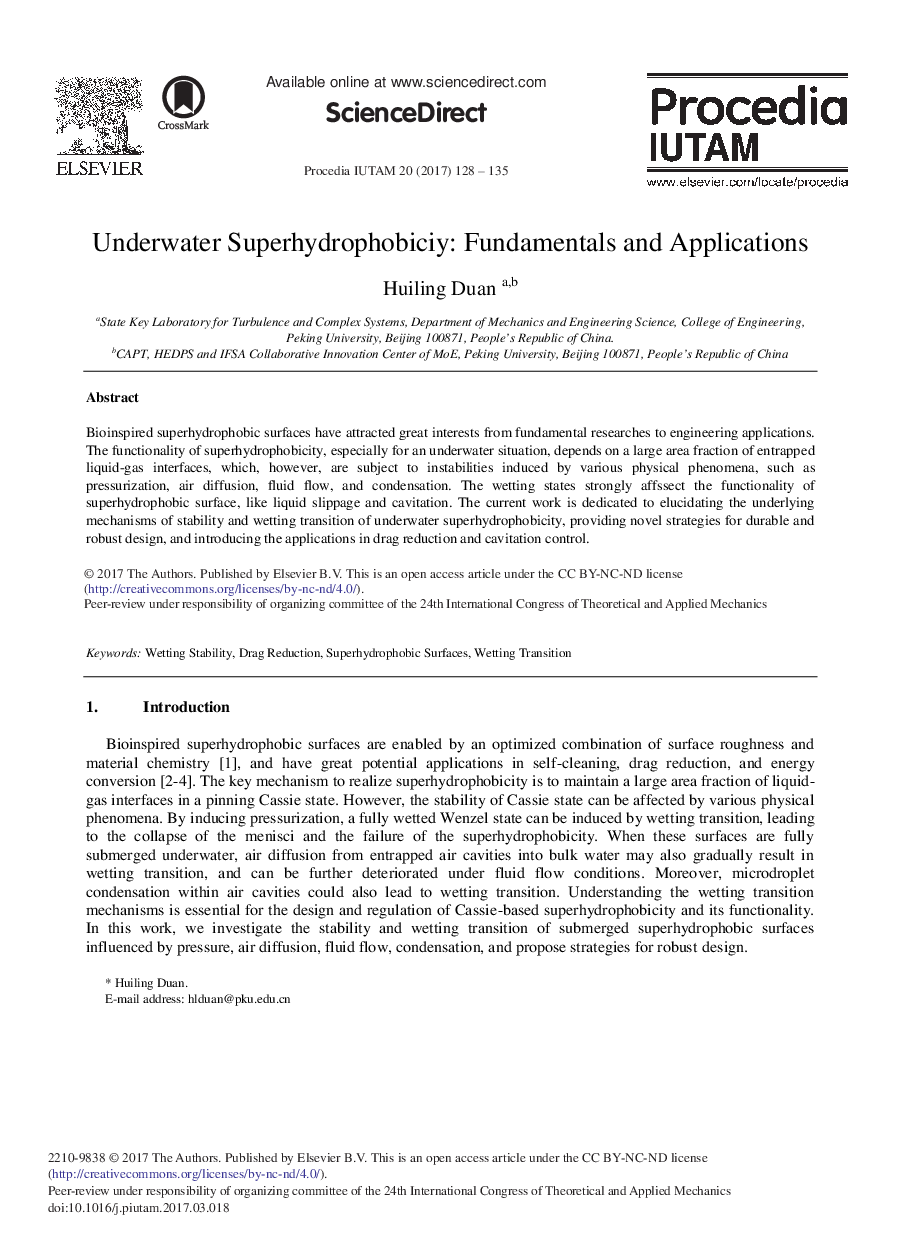| Article ID | Journal | Published Year | Pages | File Type |
|---|---|---|---|---|
| 5030594 | Procedia IUTAM | 2017 | 8 Pages |
Bioinspired superhydrophobic surfaces have attracted great interests from fundamental researches to engineering applications. The functionality of superhydrophobicity, especially for an underwater situation, depends on a large area fraction of entrapped liquid-gas interfaces, which, however, are subject to instabilities induced by various physical phenomena, such as pressurization, air diffusion, fluid flow, and condensation. The wetting states strongly affssect the functionality of superhydrophobic surface, like liquid slippage and cavitation. The current work is dedicated to elucidating the underlying mechanisms of stability and wetting transition of underwater superhydrophobicity, providing novel strategies for durable and robust design, and introducing the applications in drag reduction and cavitation control.
